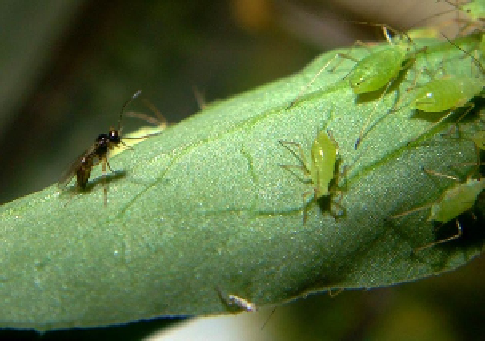Geoscience Reference
In-Depth Information
emphasis on the role of body size in ecological network structure has
resulted in the increased prominence of aquatic food webs and 'traditional'
predator-prey interactions (e.g.
Castle et al., 2011; Gilljam et al., 2011
; Jacob
et al., 2011;
O'Gorman and Emmerson, 2010; Meli
´
n et al., 2011
). However,
due to recent recognition of the importance and prevalence of parasitoid
interactions within ecosystems (
Lafferty et al., 2008
) and the relative ease
with which links in these networks can be identified and quantified (
van Veen
et al., 2006
), there has been a resurgence in the number of studies considering
host-parasitoid networks (
Ings et al., 2009
).
B. Host-Parasitoid Networks
The study of host-parasitoid networks considers a specific type of trophic
interaction in which the 'prey' resource is used as a nursery for offspring, as
opposed to as an energy source for the foraging adult. In insects, parasitoid-
ism describes a lifestyle in which the parasitoid oviposits in, on or near a
suitable host that the hatched larvae will consume during development,
which always results in host death (
Quicke, 1997
). Although the parasitoid
life cycle has evolved in many insects groups, including the Diptera and
Coleoptera, the greatest diversity of parasitoids has been described in the
Hymenoptera (
Quicke, 1997
). Roughly, half the currently described species
within the order Hymenoptera are parasitoids (such as Aphidius ervi;
Figure 1
),
57,500 species according to
Sharkey (2007)
, although it is
Figure 1
The parasitoid wasp Aphidius evri grooms while foraging within a patch of
pea aphids, Acyrthosiphon pisum. Photo taken by DCH.

